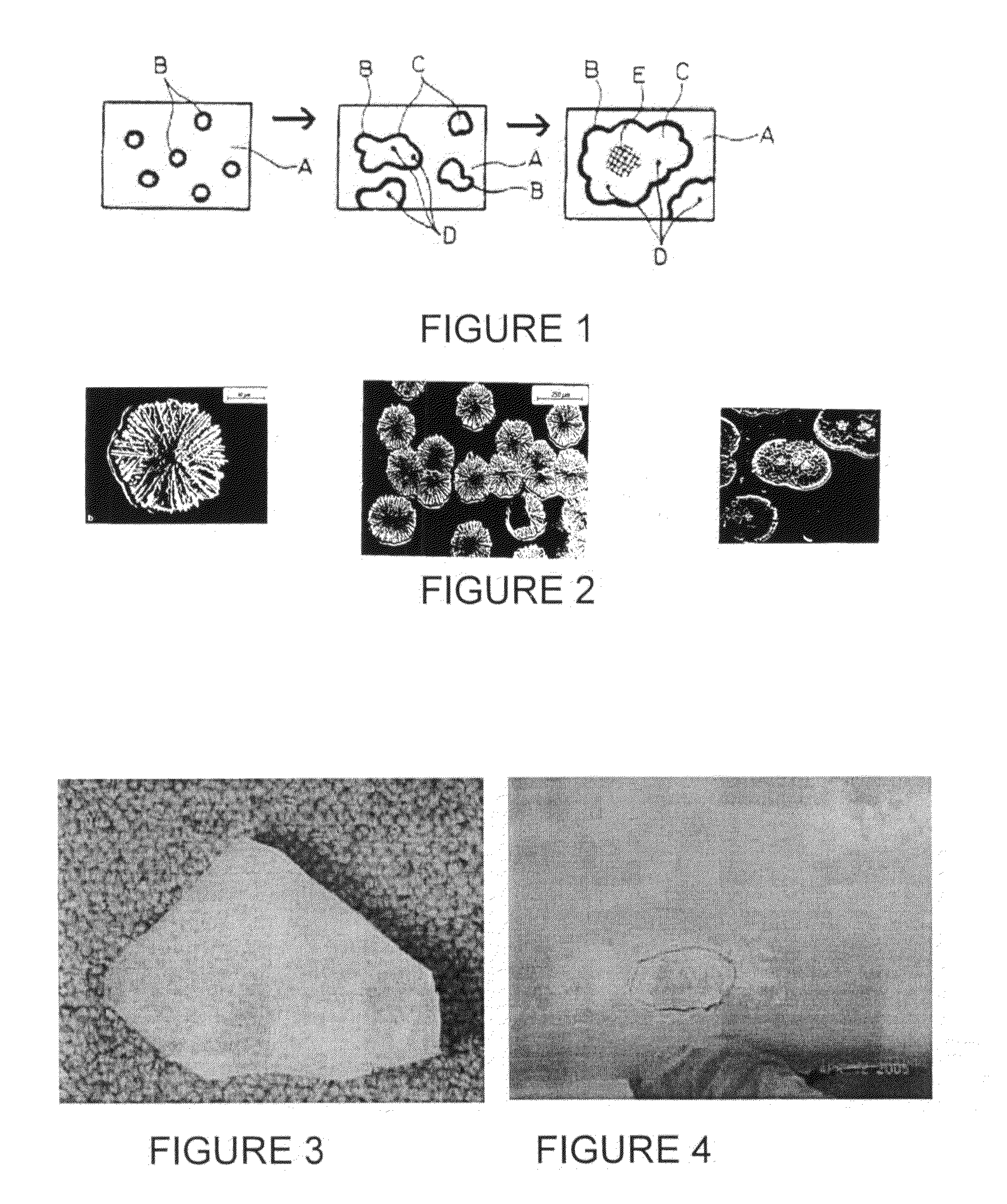Quartz glass crucible and method for treating surface of quartz glass crucible
a technology of quartz glass and crucible, which is applied in the direction of crystal growth process, polycrystalline material growth, transportation and packaging, etc., can solve the problems of reducing yield, reducing chemistry, and reducing so as to reduce chemistry and reduce the effect of capacity and prolonging the life of quartz glass crucibl
- Summary
- Abstract
- Description
- Claims
- Application Information
AI Technical Summary
Benefits of technology
Problems solved by technology
Method used
Image
Examples
example 1
[0090]A clean untreated crucible from Momentive Quartz of Willoughby, Ohio, USA is reacted with a Redox coating of (CH3)2SiCl2 dissolved in 1,2 dichloropropane at a ratio of 1:2. The coating is done manually by brushing the entire crucible surface with the solution, with the excess being wiped off with clean wipes.
[0091]In operation and after the first Czochralski crystal pulling run, a number of densely formed brown rings are observed on parts of the coated crucible surface as shown in FIG. 5. The crucible surface develops a higher than normal density of rosettes (as represented by the brown rings) of at least 50%, compared to the number of brown rings appearing on an untreated crucible after such a crystal pulling run. Further, the rosettes are stable for the entire length of the run and show no degradation in the center.
[0092]Besides the increased number of “brown rings” or density of rosettes, the rosettes are more well formed and appear to be thicker than the rosettes formed in...
example 2
[0093]A coupon cut from an untreated crucible from Momentive Quartz of Willoughby, Ohio, USA is first washed with silicon tetrachloride, then subsequently reacted with a source of moisture (H2O) and then coated with a Redox coating of (CH3)2SiCl2 dissolved in 1,1,1 trichloroethane at a ratio of 1:2. The coating is done manually by brushing the entire crucible surface with the silane solution. After coating, the excess solvent evaporates leaving the coating in place. The excess byproduct of the coating chemical is removed and the crucible is ready to use.
[0094]The coupon is exposed to melted silicon at a temperature in excess of 1420° C. and for 30 to 60 hours, simulating the condition of a Czochralski crystal pulling run. The coupon is removed from the melted silicon and observed under microphotography. Densely formed brown rings are observed covering at least 80% of the surface of the coupon (previously treated with the Redox coating). Additionally, the rosettes within the brown ri...
example 3
[0095]In this example, an untreated 22 inch crucible from GE Quartz of Newark, Ohio, USA was tested in a silicon crystal pulling operation vs. an embodiment of a crucible of the invention, a 22 inch crucible that was coated with a Redox coating of (CH3)2SiCl2 dissolved in 1,2 dichloropropane at a ratio of 1:2 per procedure in Example 1. The yield after the first pass for the untreated crucible was less than ½ of the yield obtained for the coated crucible of the invention. Yield is measured as inches or centimeters of good silicon crystal obtained from a run.
PUM
| Property | Measurement | Unit |
|---|---|---|
| temperature | aaaaa | aaaaa |
| temperature | aaaaa | aaaaa |
| melting point | aaaaa | aaaaa |
Abstract
Description
Claims
Application Information
 Login to View More
Login to View More - R&D
- Intellectual Property
- Life Sciences
- Materials
- Tech Scout
- Unparalleled Data Quality
- Higher Quality Content
- 60% Fewer Hallucinations
Browse by: Latest US Patents, China's latest patents, Technical Efficacy Thesaurus, Application Domain, Technology Topic, Popular Technical Reports.
© 2025 PatSnap. All rights reserved.Legal|Privacy policy|Modern Slavery Act Transparency Statement|Sitemap|About US| Contact US: help@patsnap.com



